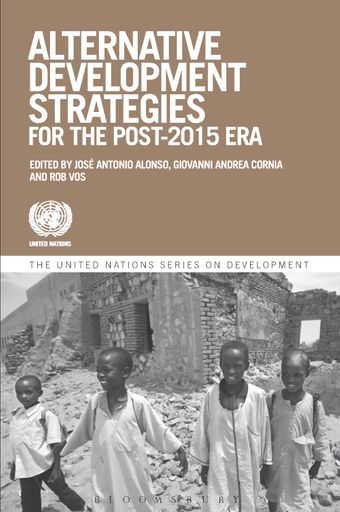Common elements for inclusive and sustainable development strategies beyond 2015

- Authors: Giovanni Andrea Cornia and Rob Vos
- Main Title: Alternative Development Strategies for the Post-2015 Era , pp 215-251
- Publication Date: December 2014
- DOI: https://doi.org/10.18356/e7d709cb-en
- Language: English
The real-life development strategies that have dominated the scene in recent decades have often been seen as models to be imitated but have in most cases generated unsatisfactory results. The Washington Consensus, which dominated the policy scene from the 1980s until recently, has led to greater global economic integration but also to slow growth, more instability and greater inequality. The “Chinese model”, in turn, heralded by many as a pragmatic alternative blueprint for developing countries has been recently criticized, including by China’s head of state, for being potentially unstable and not sustainable (both environmentally and socially), for overly relying on exports, and for suffering from under-consumption, over-investment and limited capacity to innovate (Yongdin, 2011; Roubini, 2011). In turn, the Millennium Development Goals (MDGs) agenda introduced a human development-centred development approach, but has been criticized for defining goals and targets too uniformly without considering initial country-specific conditions and for remaining vague about how to achieve those goals (see chapter 2 by Fukuda-Parr). As a result, this approach of “goals without a strategy” ended up emphasizing more increases in social spending and the mobilization of more development assistance rather than promoting the transformative changes needed to achieve a more inclusive and sustainable growth.
© United Nations
ISBN (PDF):
9781472533265
Book DOI:
https://doi.org/10.18356/f10d15b3-en
Related Subject(s):
Economic and Social Development
Sustainable Development Goals:
-
From This Site
/content/books/9781472533265c013dcterms_title,dcterms_subject,pub_keyword-contentType:Journal -contentType:Contributor -contentType:Concept -contentType:Institution105
/content/books/9781472533265c013
dcterms_title,dcterms_subject,pub_keyword
-contentType:Journal -contentType:Contributor -contentType:Concept -contentType:Institution
10
5

